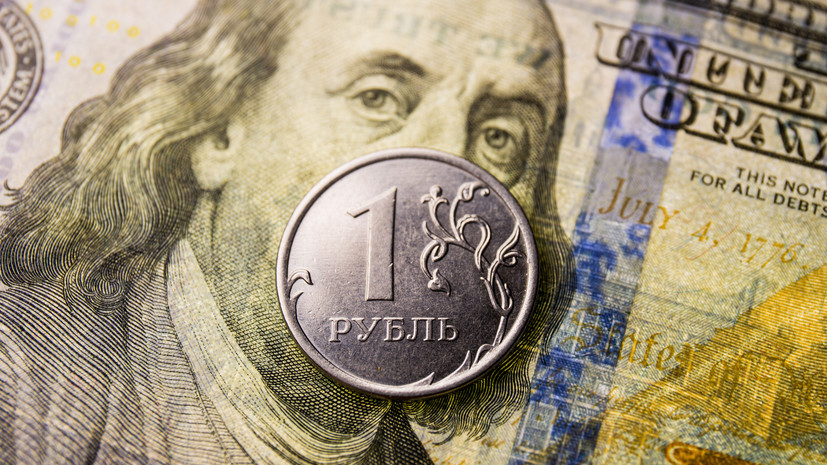On Wednesday, May 3, the Russian currency strengthened on the Moscow Exchange. In the middle of the day, the dollar fell by 0.9% and for the first time since April 4 reached 78.9 rubles. The value of the euro, meanwhile, fell by 0.67%, to 87.18 rubles, and the yuan - by 0.88%, to 11.4 rubles.
It is noteworthy that the national currency is becoming more expensive against the backdrop of a sharp decline in oil prices. So, at Wednesday's trading, the cost of raw materials of the benchmark Brent brand on the world market fell by 3.2% to $72.91 per barrel. The last time a similar value could be observed on March 24.
Usually, the fall in oil prices is accompanied by a weakening of the ruble. However, now tangible support for the Russian currency is provided by the weakened business interest in foreign banknotes, experts say.
"The strengthening of the ruble against the background of much cheaper oil, perhaps, reflects the effect of the May holidays, when the activity of importers is noticeably reduced. That is, the demand for foreign currency from companies now remains weak, which allowed the ruble to rise in price, "Mikhail Shulgin, head of the global research department at Otkritie Investments, explained to RT.
It should be noted that in April, the dollar, euro and yuan exchange rates on the Moscow Exchange at the moment rose to 83.5, 95.8 and 12.1 rubles, respectively. The levels reached were the highest in the last year. Such dynamics could also affect the current actions of importers, experts do not exclude.
"Companies began to buy less foreign products, because they understand that at such a high rate and, consequently, prices, many of their goods are no longer needed by Russians. In such a situation, business takes a break to study the demand again and understand what and in what volumes needs to be imported, what to change and what to cancel. This also led to a decrease in demand for foreign currency, and now the balance has shifted in favor of the ruble, "Valery Emelyanov, an expert on the stock market at BCS World of Investments, explained in a conversation with RT.
In addition, one of the reasons for the April weakening of the ruble could be the withdrawal of some foreign companies from Russia. For example, according to Bloomberg, the British company Shell exchanged and withdrew from the Russian Federation revenue of $ 1,2 billion from the sale of a stake in the Sakhalin-2 project. This led to a temporary jump in demand for foreign currency, which put pressure on the ruble. As a result, the authorities decided to take a number of measures to avoid similar situations in the future.
"The fact is that the liquidity of the dollar and the euro in the Russian market is not very high now, so any major currency transaction can provoke both a sharp strengthening of the ruble and its weakening. Now this factor will gradually fade into the background, since the authorities promptly responded to the departure of non-residents and demanded that all major transactions be pre-agreed, "Ivan Manaenko, director of the analytical department of Veles Capital, told RT.
In the near future, the country's leadership intends to impose a restriction on the purchase of foreign currency when foreign investors withdraw from Russian assets. This was announced at the end of April by the deputy head of the Ministry of Finance of Russia Alexei Moiseev.
"This limit will be the same, of course. The point is that there should be no influence on the foreign exchange market. That is, this means that, relatively speaking, the commission allowed to sell the business for such and such a price, but you can buy currency for a certain period so as not to violate the limit, "TASS quoted the deputy minister as saying.
According to Mikhail Shulgin, the initiatives of the authorities will also cool the interest of speculators in selling the ruble. Along with this, a gradual improvement in Russia's macroeconomic indicators should have a positive impact on the dynamics of the national currency, the expert does not exclude. A similar point of view is shared by Ivan Manaenko.
"We still have a trade surplus (exports exceed imports. — RT). In addition, forecasts for economic growth are increasing, which also plays in favor of the ruble," Manaenko said.
Earlier, a number of specialists and departments expected a reduction in Russia's GDP by the end of 2023. Meanwhile, at the moment, the International Monetary Fund admits an increase of 0.7%, the Ministry of Economic Development - by 1.2%, the Central Bank - by 0.5-2%, and the Kremlin - by 1-2%.
According to Ivan Manaenko, if current trends continue and in the absence of new geopolitical upheavals in the near future, the dollar exchange rate may drop to 77 rubles, the euro exchange rate to 85 rubles, and the yuan exchange rate to 11.2-11.3 rubles. At the same time, Valery Emelyanov does not exclude the possibility of a drop in indicators to lower levels.
"If nothing radically new is added to the market, then the dollar exchange rate can reach 72 rubles in a couple of months and find equilibrium in the usual corridor of 70-75 rubles. The euro in this case will then cost 77-83 rubles, the yuan - 10.1-10.9 rubles, "Yemelyanov concluded.

